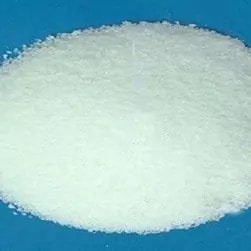IUPAC Name
Sodium Chlorate
Cas Number
09/09/7775
HS Code
2829.11.00
Formula
NaClO3
Industry
Pulp and Paper
Appearance
White Powder
Common Names
Chloric acid, sodium salt; Asex; Chlorate de sodium; Chlorsaure
Packaging
1000 @ 25 kg PP woven bag, 25 MT/20FCL
Sodium chlorate is an odorless pale yellow to white crystalline solid, widely sought after by various industries for its diverse applications. It is appreciably soluble in water and heavier, thus sinking and dissolving rapidly upon contact. While sodium chlorate itself is not flammable, caution must be exercised as contact with wood, organic matter, ammonium salts, sulfur, sulfuric acid, various metals, and other chemicals may lead to fires or explosions, particularly when solid materials are finely divided. Additionally, exposure to excessive heat, such as in fires, may trigger the evolution of oxygen gas, intensifying fires and potentially leading to explosions. Mixtures with combustible materials are highly flammable and can be ignited by friction.
The commercial manufacturing process of sodium chlorate involves electrolyzing a hot solution of sodium chloride. Brine water serves as the source of sodium chloride, which is purified by removing contaminants like calcium and magnesium. The purified sodium chloride solution is then combined with hydrochloric acid to adjust the pH and enhance operational efficiency within an electrochemical cell. This cell, heated and maintained at 70°C, utilizes electricity to charge the raw material mixture. Sodium dichromate acts as a catalyst in this reaction. Chlorine gas forms at the anode, while hydrogen gas is produced at the cathode. The chlorine undergoes hydrolysis to form a hypochlorite series, eventually reacting with sodium to yield sodium chlorate. The resulting solution undergoes treatment to remove hypochlorite byproducts, after which sodium chlorate crystals are separated, washed, dried, and prepared for crushing and packing. For businesses seeking a reliable sodium chlorate supplier, it's essential to partner with a company that prioritizes quality, safety, and consistency in their manufacturing processes.
Sodium chlorate is an odorless pale yellow to white crystalline solid, widely sought after by various industries for its diverse applications. It is appreciably soluble in water and heavier, thus sinking and dissolving rapidly upon contact. While sodium chlorate itself is not flammable, caution must be exercised as contact with wood, organic matter, ammonium salts, sulfur, sulfuric acid, various metals, and other chemicals may lead to fires or explosions, particularly when solid materials are finely divided. Additionally, exposure to excessive heat, such as in fires, may trigger the evolution of oxygen gas, intensifying fires and potentially leading to explosions. Mixtures with combustible materials are highly flammable and can be ignited by friction.
The commercial manufacturing process of sodium chlorate involves electrolyzing a hot solution of sodium chloride. Brine water serves as the source of sodium chloride, which is purified by removing contaminants like calcium and magnesium. The purified sodium chloride solution is then combined with hydrochloric acid to adjust the pH and enhance operational efficiency within an electrochemical cell. This cell, heated and maintained at 70°C, utilizes electricity to charge the raw material mixture. Sodium dichromate acts as a catalyst in this reaction. Chlorine gas forms at the anode, while hydrogen gas is produced at the cathode. The chlorine undergoes hydrolysis to form a hypochlorite series, eventually reacting with sodium to yield sodium chlorate. The resulting solution undergoes treatment to remove hypochlorite byproducts, after which sodium chlorate crystals are separated, washed, dried, and prepared for crushing and packing. For businesses seeking a reliable sodium chlorate supplier, it's essential to partner with a company that prioritizes quality, safety, and consistency in their manufacturing processes.
